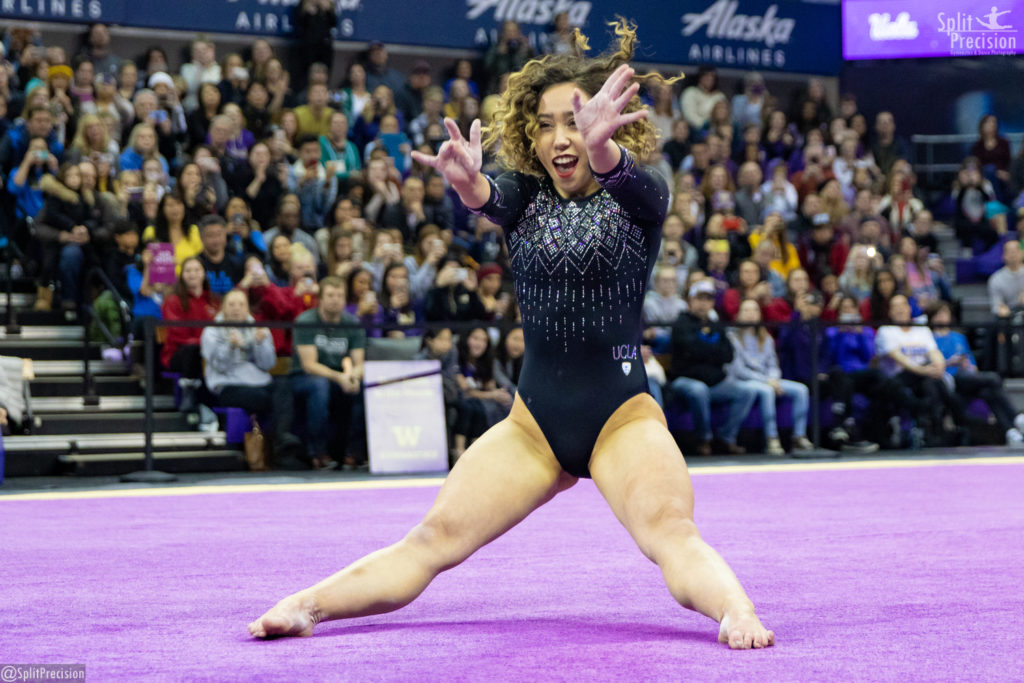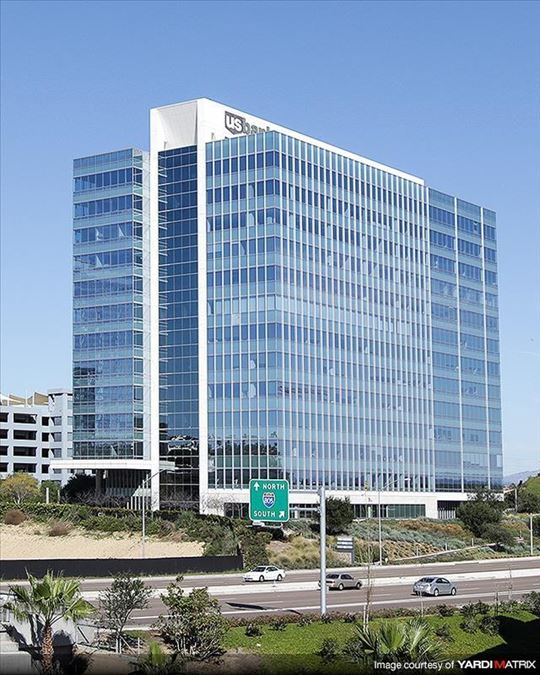Daily Business Report-July 5, 2019
La Jolla Commons sold for $525 million in the second quarter. (Image courtesy of YardiMatrix)
San Diego’s office market heats up
with fundamentals firing on all cylinders
Since the start of 2018, there have been 10 sales over $100 million signaling investors confidence in an office market that typically sees two to three deals that size per year, according to JLL’s second quarter office market report.
Adding to the robust institutional sales velocity, each of the last four years have set a new high watermark price per square foot. The most recent example is the sale of the La Jolla Commons in the second quarter (Q2), which sold for $525 million, or $712 per square foot.
On the heels of this transaction, the market’s overall average sale price per square foot rose to its all-time high of $392 in Q2, which is up 9.5 percent from the prior year. 2018 had a 10-year best office sales volume of $2.1 billion, and through Q2 2019 office sales volume is pushing nearly $1 billion indicating sales activity is closely tracking 2018 volume.
Over the last five years companies have been flocking to high-quality office buildings in order to recruit and retain talent in a tight and competitive labor market, currently at a 2.8 percent unemployment rate. This is clearly portrayed in the Class A segment with a total of 580,521 square feet of positive absorption halfway in 2019 and over 1.7 million square feet of occupancy gains since 2017. This flight to quality for office users is a trend for the defense, technology, life sciences, and coworking industries, dominating the Class A sector with 47 percent of the total leasing from the start of 2017.
Outlook
Despite a few redevelopment projects being delivered vacant in Q2, the market has showcased its resilience with vacancy remaining stable over the last three quarters at 11.6 percent, a 10-year low. Midway through 2019, positive absorption is halfway to 1 million square feet and rents have increased by 3.4 percent since Q4 2018.
__________________

Should college athletes profit from their prowess?
NCAA says no, but California may say yes
By Felicia Mello | CALmatters
Hayley Hodson’s volleyball career took off when she was still in high school, with an invitation to compete on the U.S. Women’s National Team. As she traveled the world winning medals, the Newport Beach student took care not to run afoul of NCAA eligibility rules barring prospective college athletes from accepting financial compensation, her sights still set on playing for a top school. She turned down an endorsement deal with a sunglasses brand and the stipend offered to her teammates, she says, telling herself there would be time later to play professionally.
But later never came for Hodson, who suffered a career-ending head injury on the court during her freshman year at Stanford.
“My dreams of playing in the Olympics are over,” Hodson, 22, said in an email. “It has been a devastating and difficult, not to mention expensive, journey.”
That’s how Hodson found herself testifying this spring in the California Senate in support of the “Fair Pay to Play Act,” which would allow student athletes to profit from the use of their name, image or likeness. Authored by Sen. Nancy Skinner, the bill would directly contradict NCAA policies enforcing amateurism in college sports, and is the latest front in an ongoing battle over student athlete compensation.
Past controversies have focused on whether men’s football and basketball stars should share in the revenue they generate for what has become a multi-billion-dollar college sports industry. Skinner, however, is making the novel argument that the students most likely to benefit from her bill are those on the lower rungs of the athletic-industrial complex—female athletes, those in low-profile sports, and even community college players. Those students, she says, often don’t receive athletic scholarships and might never go pro.
“While they’re in college is the time when their reputation is the largest, their athletic prowess is the greatest, and they haven’t been injured yet,” Skinner said.
The NCAA set up a working group in May to study whether to change its policies on paid endorsements, and the University of California, California State University, and the Association of Independent California Colleges and Universities—the trade group representing the state’s private colleges—have all come out against Skinner’s proposal. The schools cite concerns that their athletes could be barred from competition if California takes action before the NCAA finishes its review.
UC also raised another fear.
“Allowing student-athletes to receive compensation from outside sponsors would jeopardize the University’s existing sponsorship agreements, leading to budget cuts…,” the university’s legislative director wrote in a letter to lawmakers.
Sports are big business at the University of California and other colleges with Division 1 teams. The two highest-earning employees at UC in 2017 were athletic coaches, each making more than $2.5 million that year.
Some athletes “don’t have enough money to go home and see their family, yet they see their coaches driving away in $100,000 cars,” said Eddie Comeaux, a professor of higher education at UC Riverside who studies college athletics.

A lawsuit by former UCLA basketball star Ed O’Bannon over the use of his likeness in a video game without compensation led to a 2015 court ruling that the NCAA must allow schools to cover athletes’ full cost of attendance. Scholarships now can include books, transportation and unlimited meal plans.
Not every athlete benefits, though. Just over half of Division 1 players receive athletic scholarships, according to the NCAA.
At California’s community colleges, football players from around the country flock to a separate league, hoping to be noticed by a Division 1 recruiter while they work on their academic or athletic qualifications. Out-of-state students pay higher tuition at community colleges, as much as $7,000 per year depending on the campus.
“At first it was real tough, you know, not being on a scholarship, having to pay for everything out here already,” said BJ Williams, a defensive back who relocated from Florida to play at Mt. San Antonio College. “That’s a lot of money out of pocket.”
Williams said he shared a three-bedroom apartment with six other students to save on rent. His football schedule, he said, didn’t allow time for a part-time job.
Skinner argues that Williams and other less-high-profile athletes could earn sponsorships from their hometown businesses if her bill passes. If they’re lucky enough to star in a video that goes viral—like UCLA gymnast Katelyn Ohashi did earlier this year—they could monetize that. The bill would prevent colleges or the NCAA from taking action against athletes who pursue such opportunities, or who contract with agents.
But how many of those opportunities would actually pan out?
“We’ve got the rare cases, like [former Duke basketball player] Zion Williamson, where companies would be lined up,” said Nancy Lough, a University of Nevada Las Vegas professor and former collegiate coach who studies gender and marketing in college sports.
“Beyond that, I think we’re talking small potatoes here. There may be a local car dealership where the community really resonates with the athlete and they decide to sponsor them. I don’t see that these athletes are going to get wealthy because this bill is passed.”
Probably the biggest impact if the legislation passes, said Lough, is that “NCAA committees would get busier and more intentional on deciding how they’re actually going to deal with this issue.”
They’d have time: The measure wouldn’t take effect until 2023. It is scheduled to be heard by the Assembly’s higher education committee July 9.
The hearing comes after NCAA President Mark Emmert wrote to another Assembly committee, urging it to delay the bill. The legislation “threatens to alter materially the principles of intercollegiate athletics and create local differences that would make it impossible to host fair national championships,” Emmert wrote in what some saw as a veiled threat to exclude California teams.
The committee passed SB 206 anyway, but staffers added an unusually vivid warning to the typically-dry legislative analysis that accompanies each bill. “Beyond this,” they wrote, “there be dragons.”
Student journalist Andres Soto of CALmatters’ Cost of College project contributed reporting. This story and other higher education coverage are supported by the College Futures Foundation.
__________________
Airport Authority announces new transit
deal to alleviate traffic, improve access
The San Diego County Regional Airport Authority announced a deal with its airlines worth half a billion dollars to improve access and alleviate traffic to the airport.
Potential projects include a roadway connecting Laurel Street directly to the airport with no traffic lights. It would remove an estimated 45,000 cars per day from Harbor Drive and could free up space for potential trolley and Rapid Bus service, the agency said.
The city of San Diego and SANDAG want to build a “San Diego Grand Central” on land currently occupied by the Navy, connecting the terminals to the regional trolley system with a rail-based people mover. How to pay for it all was the open question.
After heavy scrutiny from other public officials last year, the Airport Authority pumped the brakes on its plan to redevelop Terminal 1 after lots of pushback from local agencies.
— Voice of San Diego
__________________
Swoop announces new route to San Diego
from Edmonton, Alta. and Abbotsford, B.C.
Swoop announced service to San Diegofrom Edmonton, Alta. and Abbotsford, B.C. beginning Oct. 4, 2019. This announcement comes one week after the release of Swoop’s 2019 winter schedule which offers nonstop flights in 39 markets that are available for booking now through April 25, 2020.
As a complement to the published winter schedule, Swoop has added three-times weekly service between Edmonton International Airport and three-times weekly service between Abbotsford International Airport and San Diego International Airport. The nonstop San Diego routes are offered every Thursday, Friday and Sunday.
San Diego joins Los Cabos, Mexico as one of two new destinations in Swoop’s 2019 winter schedule which offers 28 winter getaway routes to fun and sun destinations.
Swoop will be accepting the delivery of three more aircraft in 2019, bringing its fleet total to 10 Boeing 737-NG 800s by the end of the year. Flights are now available for booking through April 25, 2020.



